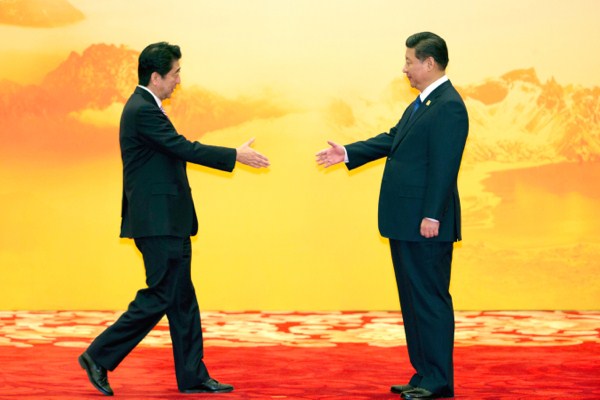Japan and China took another step toward thawing relations over access and territorial rights in the East China Sea with the resumption earlier this month of high-level maritime talks in Tokyo. The Jan. 12 meeting focused on creating a crisis-management mechanism that would mitigate any potential flashpoint surrounding the disputed Senkaku Islands, claimed by China as the Diaoyu. Japanese Prime Minister Shinzo Abe and Chinese President Xi Jinping agreed to work toward establishing such a maritime crisis hotline after their brief meeting on the sidelines of the Asia-Pacific Economic Cooperation (APEC) summit meetings held in Beijing last November. That summit was also preceded by a high-level meeting last September on maritime affairs by defense officials on both sides in Qingdao, through which Beijing and Tokyo agreed in principle to resume talks on preventing clashes in the East China Sea.
This month’s maritime discussions involved senior representatives from the Japanese and Chinese Defense Ministries as well as officials from their respective navies and coast guards. During the meeting, both sides reaffirmed their mutual intention to create a hotline to prevent the escalation of any potential conflict in the East China Sea. Moreover, they reached a basic agreement on establishing a common radio frequency for both sides’ maritime vessels and air assets in the region.
Although the talks and agreed-upon measures were still basic in nature, they represented a solid first step in lowering mutual threat perceptions around the disputed islands. Japan’s defense minister, Gen Nakatani, was optimistic after the discussions, saying, “At a time when we see an increased risk of unforeseen events in waters and airspace, including in the East China Sea, I’d like to welcome it as a major step.” Chinese media has been similarly positive, with several state-run outlets praising the talks and looking at the symbolism of a broader Sino-Japanese thaw. State news agency Xinhua labeled the talks “an encouraging sign” that “offers another opportunity for tension reduction.” The cautiously optimistic tone in China is a significant departure from the uncompromising media coverage of Japan since Abe was elected back in December 2012.

